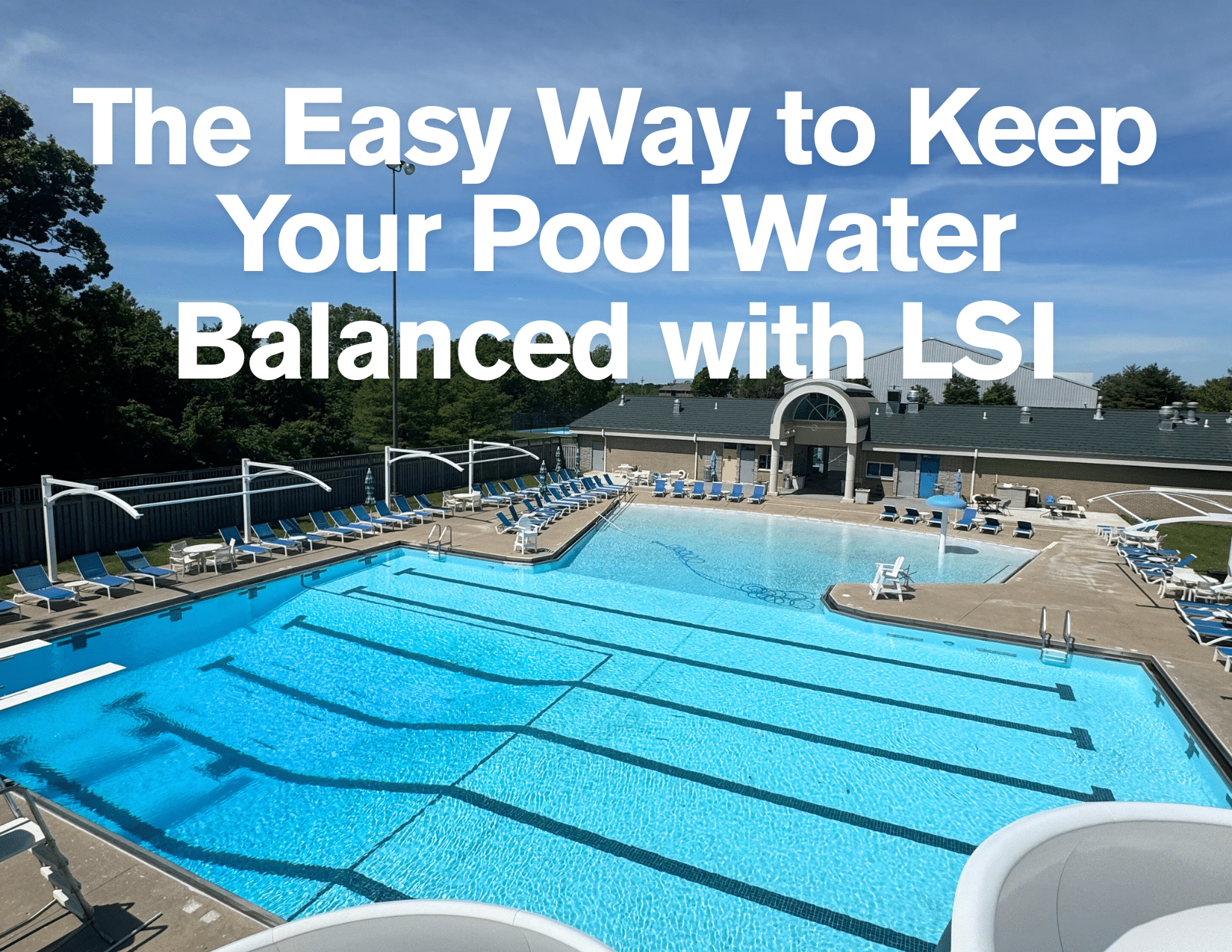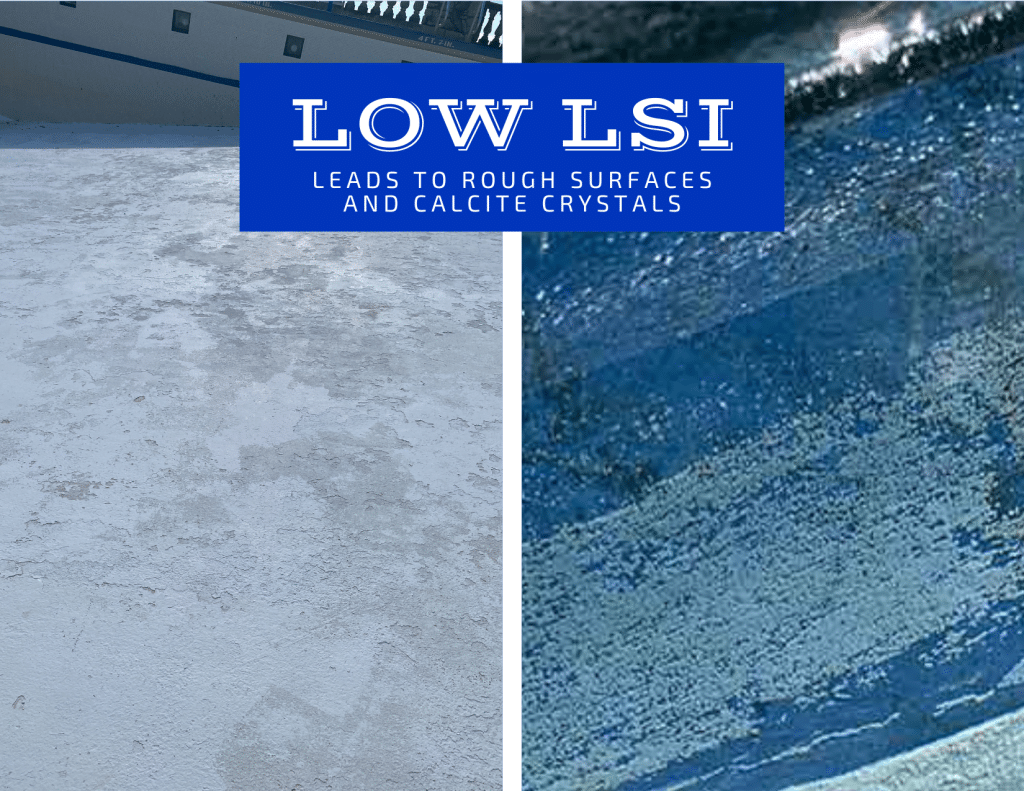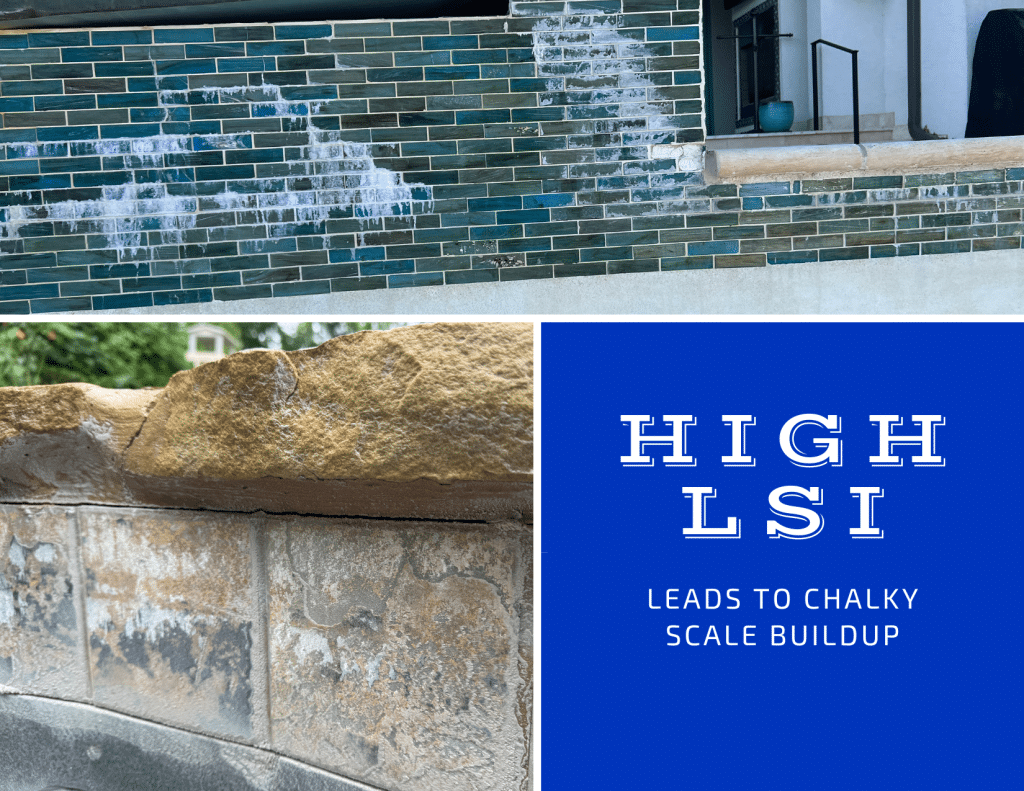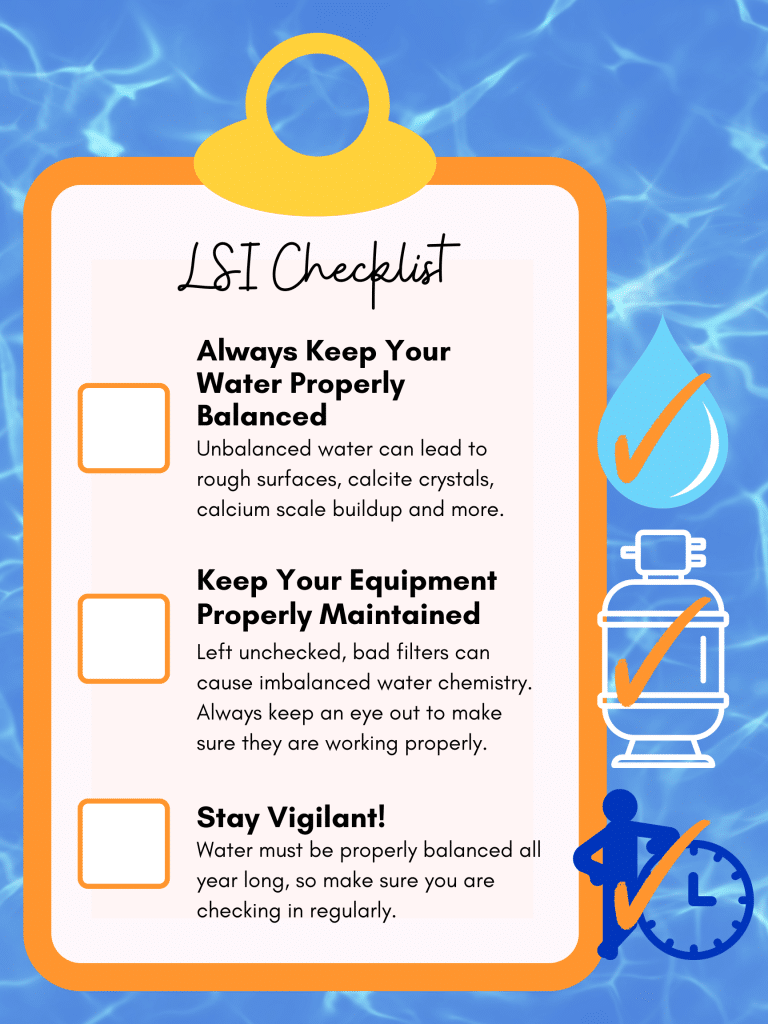The Easy Way to Keep Your Pool Water Balanced with LSI
If you just wrapped up a pool renovation (or even if you didn’t), LSI should be on your radar. It’s the secret to keeping your plaster fresh and tile in tip-top shape. Maintenance is like an insurance policy for your renovation, and LSI is one of the most important aspects of pool care.
LSI (short for Langelier Saturation Index) helps keep your water balanced so it doesn’t eat away at your surfaces or leave behind that annoying, chalky, white buildup. Basically, it keeps your pool healthy and your renovation protected. When your water’s just right—not too corrosive, not too scale-forming—your surfaces and equipment stay in great shape.
And a well-maintained pool isn’t just beautiful, it boosts curb appeal and resale value. (Yay!) Neglect, on the other hand, leads to early wear and tear, costly repairs, and a dip in property value.
Here’s what you need to know to keep your pool looking as fresh as the day the plaster dried.
What is LSI?
LSI is the scientific formula used to determine if your pool water is balanced, corrosive, or scale-forming.
It’s the science behind healthy pool water, and a must-know if you’ve invested in new plaster or a new pool finish.
LSI takes into account:
- pH
- Alkalinity
- Calcium hardness
- Water temperature
- Total dissolved solids (TDS)
Low LSI (negative value) means your water is too corrosive. Water with low LSI will start pulling calcium from plaster, tile, grout, and even metal parts. That leads to rough surfaces, pitting, calcite crystals and expensive repairs.
High LSI (positive value) means your water is too scale-forming. It’s what causes that chalky white buildup, known as calcium scale, on tile, plaster, and equipment.




